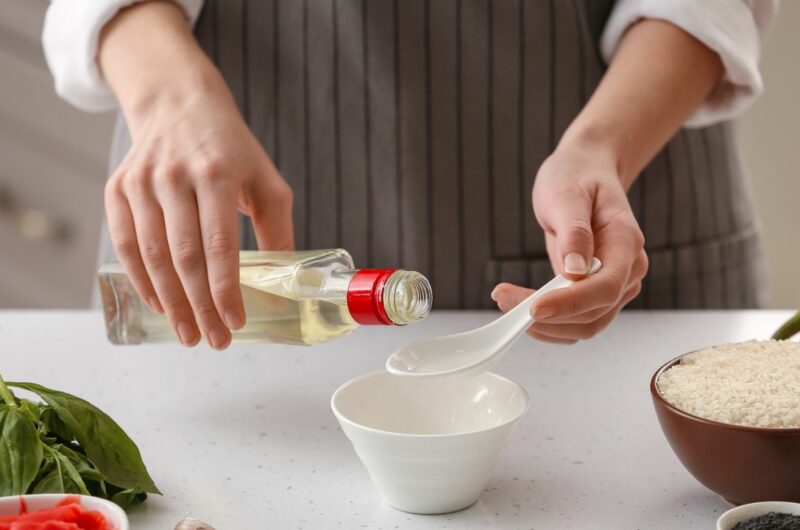Mastering the Basics: A Step-by-Step Guide to Seasoning Sushi Rice!
Learn how to season sushi rice perfectly every time. Here, I shared my tried and tested techniques on how to season sushi rice in an authentic way that is perfect for making all kinds of sushi, like nigiri and maki.
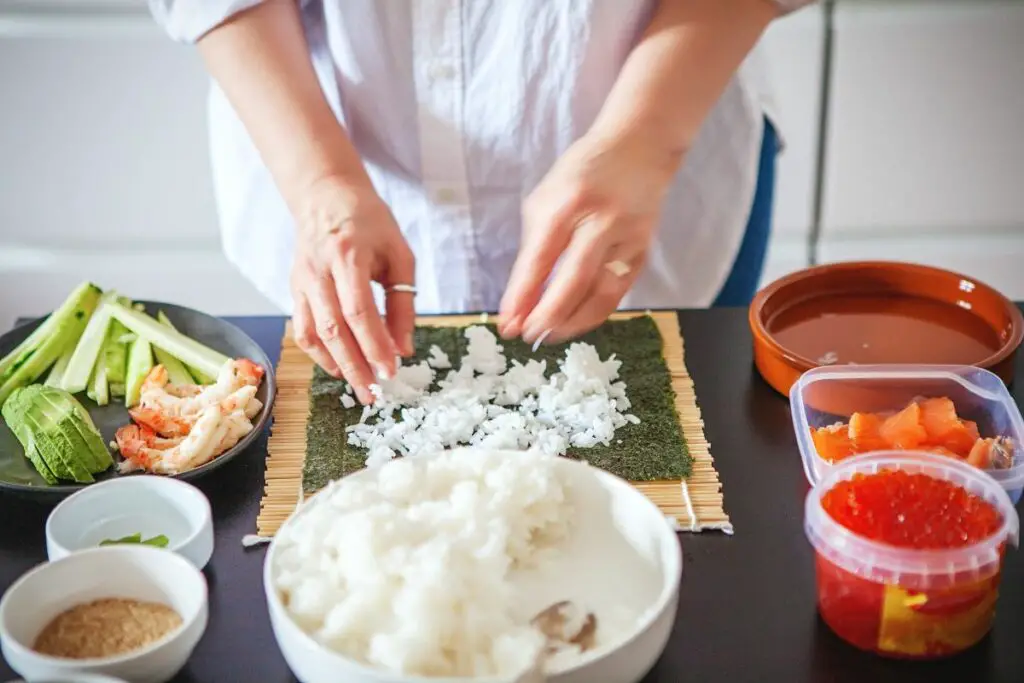
So you’ve decided to make sushi rice at home, and you’ve meticulously measured the correct amount of short-grain sushi rice, washed and rinsed it to perfection, and determined the exact amount of water to use. You’ve cooked the rice properly, and now it’s time to season those fluffy white granules of umami.
Are you ready?
Equipment and Ingredients For The Perfectly Seasoned Sushi Rice
Hold on one second. Before diving into sushi heaven, let’s go over the tools and ingredients necessary to properly season sushi rice.
1. Hangiri, Also Known as Sushi Oke
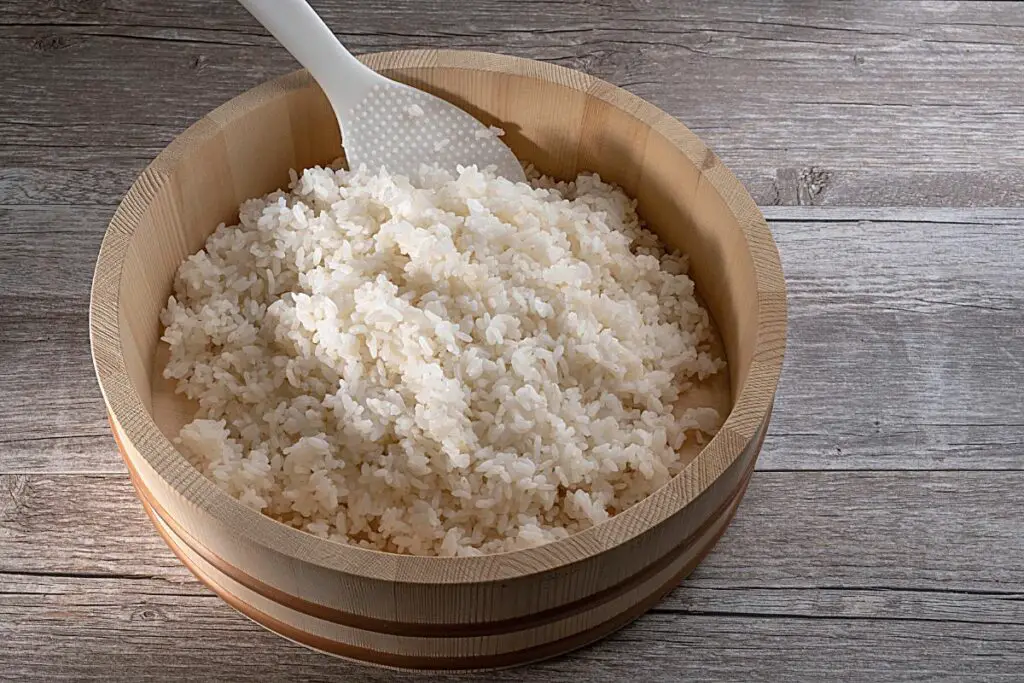
First, you will need a hangiri/sushi oke, a round, flat-bottomed wooden bowl typically made of Japanese cypress.
TAP ON IMAGE TO VIEW PRICE
While larger, restaurant-size hangiri is very expensive, you can purchase a smaller bowl to use at home from your local Japanese market or even from Amazon, like the one that I got (above).
With the purchase of the hangiri bowl, a mixing spoon is typically packaged with it. If this is not the case, you will want to use a flat wooden spoon or a white plastic rice serving spoon that typically comes with the purchase of a rice cooker.
It is important that the bowl is made of wood because it will allow the excess water content from the rice to be absorbed into the actual wood. This will give the rice more room to absorb the vinegar solution that you will be using to season the rice.
If you are only planning to make sushi once, you can get away with using a plastic bowl, but any sushi lover will quickly notice the quality difference in your sushi rice.
2. Vinegar Seasoning or Sharizu
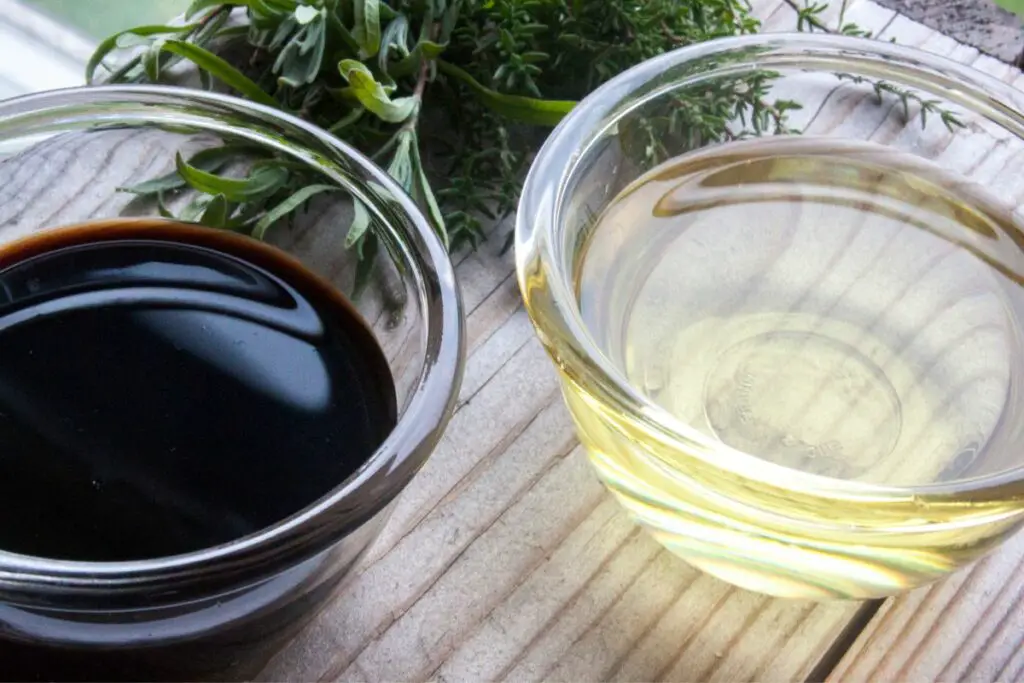
Next up is the vinegar solution, or sharizu in Japanese.
You always want to use natural unseasoned rice vinegar. This will allow you to control the salt and sugar content. Don’t cheat and buy the already seasoned rice vinegar, please.
TAP ON IMAGE TO VIEW PRICE
Rice vinegar can come in the traditional clear varietal or the red version, called akasu. Akasu has a slightly different flavor profile, similar to sherry vinegar. Many restaurants use a custom blend of both kinds of vinegar.
Always try to find the best quality vinegar regardless of which color and ratio you’ve decided to use.
I recommend that the vinegar is organic and made in Japan, but if that’s not the case, just check the ingredients to ensure that there are no fillers and preservatives.
3. Kombu (dried kelp)

The seasoning for sushi vinegar is fairly basic. All you will need is salt, sugar, and kombu, which is dried kelp, a type of seaweed used to make dashi and soups in Japanese cuisine.
TAP ON IMAGE TO VIEW PRICE
Kombu adds an underlying umami flavor that cannot be found in salt. This will take your vinegar game to the next level.
For 1 cup of vinegar, you will need about 5 tablespoons (90 grams) of sugar and 3 tablespoons (55 grams) of salt. Of course, the sugar and salt should be of the highest quality.
4. Japanese Sea Salt
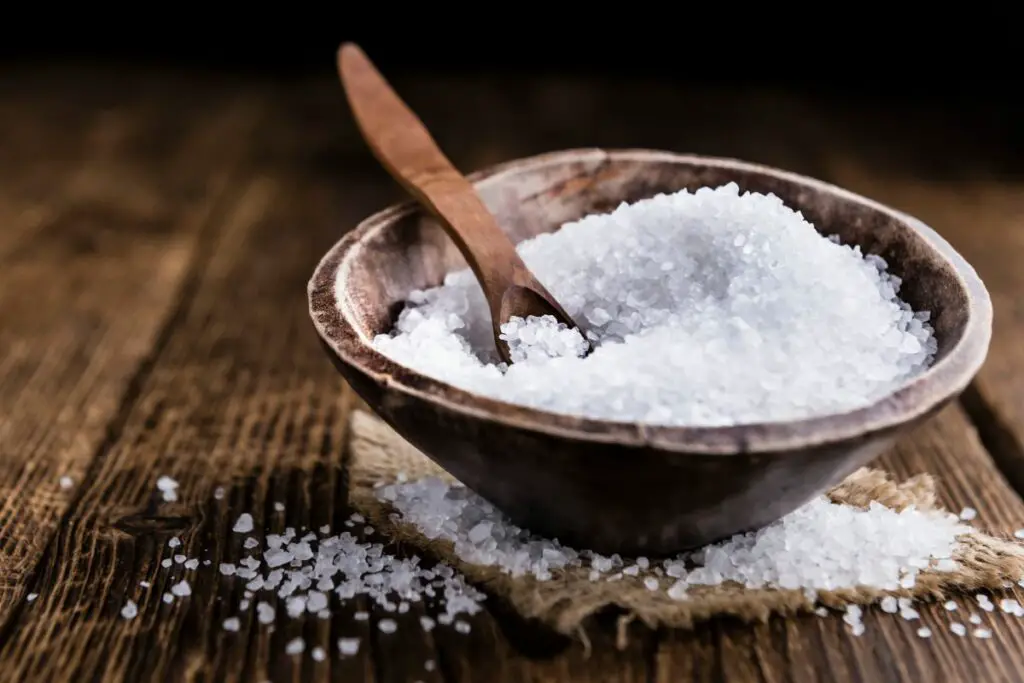
If possible, I recommended using yakishio (Yaki-Shio), which is a traditional roasted Japanese salt like the one below.
TAP ON IMAGE TO VIEW PRICE
Yakishio has a mild sharpness and a very gentle salinity when compared to traditional kosher salt. Extra fine Himalayan pink salt or kosher salt are also acceptable alternatives.
5. Sugar
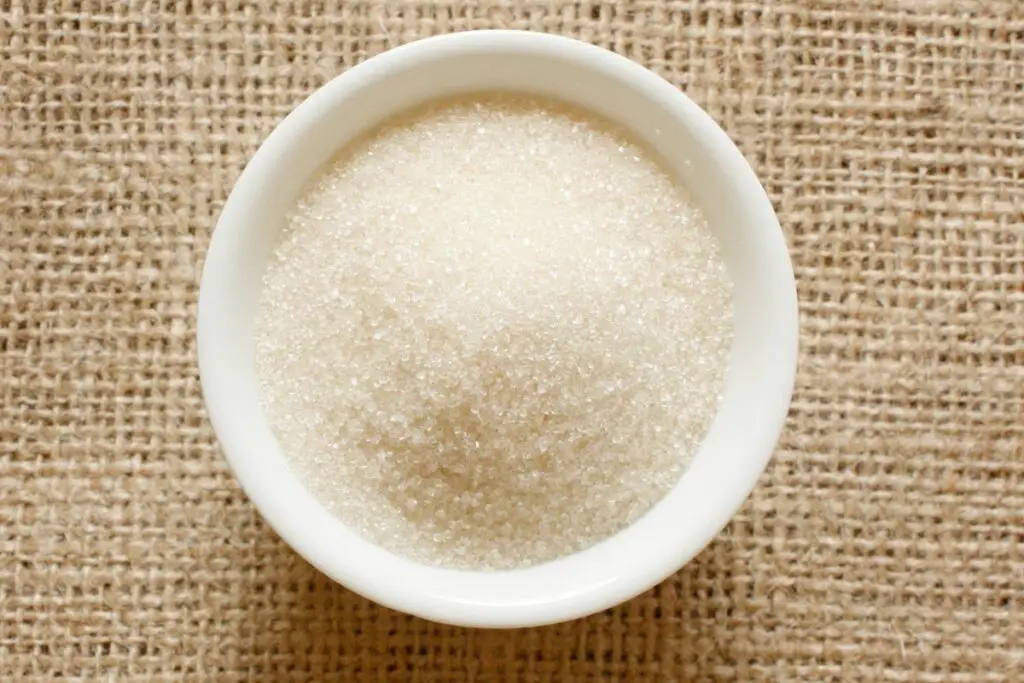
If you are already going all-out on the salt, you might as well use johakuto, a premium Japanese white sugar similar to caster sugar. It has a higher moisture content and dissolves very easily.
TAP ON IMAGE TO VIEW PRICE
But since johakuto is challenging to find in the US, my favorite substitute to use is organic granulated white cane sugar like the one above.
Making Sushi-Zu – Sushi Vinegar Recipe
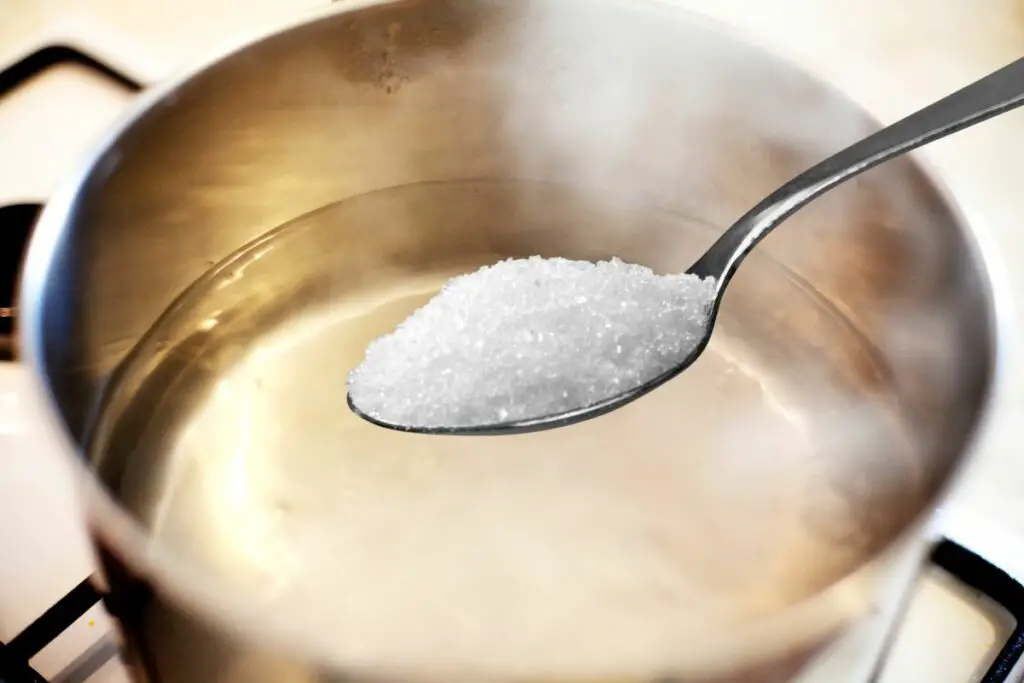
Below is the popular ratio of all the ingredients for balanced salty, sweet, and sour tastes. This recipe makes enough sushi rice vinegar to season about 8 cups of cooked sushi rice.
- 1 cup of (16 tbsp) unseasoned rice vinegar
- 5 tablespoons (90 g) of sugar
- 3 tablespoons (55 g) of salt
- (Optional) two-by-two square-inch piece of Kombu (dried kelp)
Note: You can adjust the ratio of the ingredient according to your taste.
- To make the seasoned vinegar mixture, combine all the ingredients in a small pot or saucepan.
- Heat the mixture on low heat while stirring until the salt and sugar completely dissolve.
- Make sure you don’t boil the mixture; just heat it slightly.
You can store the seasoned rice vinegar in a fridge in a glass jar with a good lid. It will keep up to two weeks.
For the kombu, all you really need for the vinegar seasoning is a small two-by-two square-inch piece for this recipe.
After mixing the sugar and salt with the vinegar, remove it from the heat and place the kombu square directly into the solution.
For the best result, allow the sharizu (Sushi-Zu/Seasoned Rice Vinegar) to sit overnight before using it for seasoning sushi rice. That will allow the kombu to fully release the flavors into the vinegar.
Depending on the amount of rice you are cooking, you will need the correct amount of vinegar for seasoning. For every cup of raw, uncooked rice, you will want to use about 45 milliliters (3 tablespoons or 0.19 cups) of seasoned vinegar.
How To Season Sushi Rice?
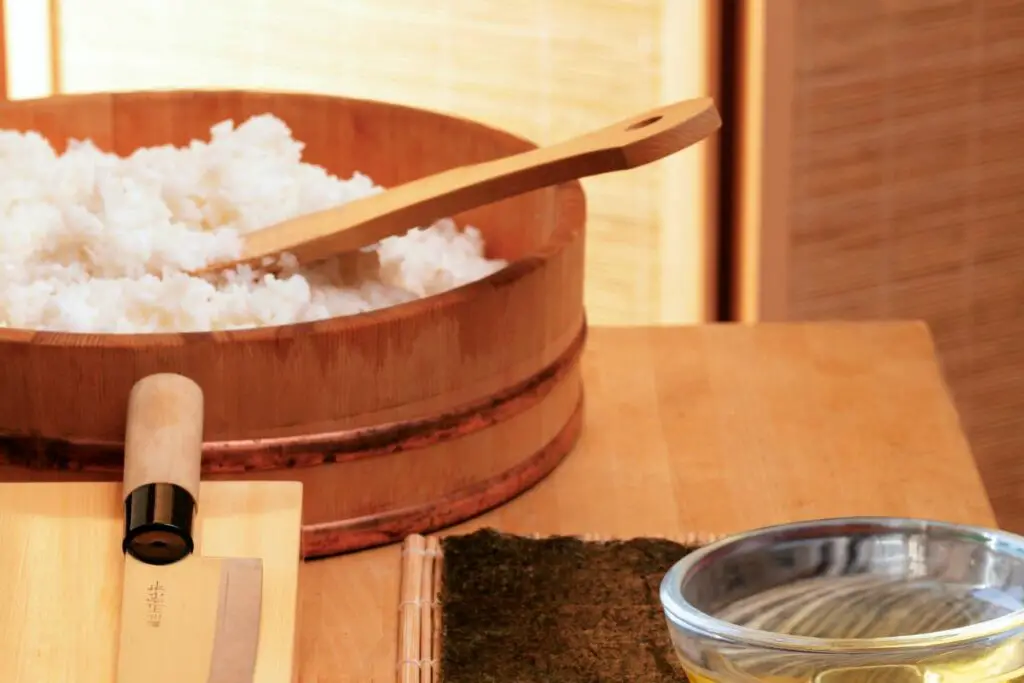
- While the rice is cooking, soak your hangiri (sushi oke/bowl) in water for about 5 minutes. Pour the water out and wipe the bowl of any excess water. The bowl should be just damp and not soaking wet.
- Transfer the cooked rice from the cooking vessel directly into the center of the hangiri. Take care to remove any crispy bits of rice from the edges, which will clump up and harden as it cools.
- Slowly pour half of the vinegar solution directly onto your mixing spoon above the rice while making horizontal slicing motions to evenly drizzle and distribute the vinegar.
- Once all of the vinegar has been poured, start carefully mixing the rice using a cut-and-fold motion.
- Flip the rice over from the bottom about 4-5 times; while doing this, rotate the bowl if necessary. You are looking to break up the rice clumps so that there are no grains sticking to each other.
- Take extra care not to press or mash the rice during mixing as you don’t want to mush the grains.
- Look for any small clumps of rice because this indicates that the rice has not yet been seasoned with vinegar.
- Continue this process until all of the rice has been completely separated.
- Once this has been achieved, gently spread the rice out into a flat even layer on the base of your mixing bowl. You want as much surface space as possible to allow the rice to cool properly.
- Allow the rice to rest for 5 minutes, then flip the rice in sections until the entirety of the rice has been flipped.
- Allow the flipped rice to rest for an additional 5 minutes. This lets the vinegar that was on the bottom of the rice gently soak evenly through to the top.
- The rice is now ready to use!
This season sushi rice is called Sumeshi, also known as sushi-meshi.
Cover the rice with a warm, damp cloth and plastic wrap to keep it warm. It is a lot easier to make the sushi and form the shape while the rice is still warm.
I recommend keeping the rice warm utilize your rice cooker’s “Warm” function to keep the rice at the ideal temperature.
Although you can store the leftover sushi rice in the refrigerator for another day, it will lose its flavor and its sticky texture and won’t give you that delicious well-formed shiny sushi anymore.
When making sushi-meshi, try to approach it not as an exact science but more like an art. The taste of sushi rice varies from chef to chef and your own personal preference. Some like it sweeter, while others may prefer it more sour.
Don’t be afraid to adjust the amount of salt and sugar when seasoning the vinegar.
Read Also: How To Make Brown Rice Sticky For Sushi (Plus 5 Whole Grain Sushi Recipes).
Frequently Asked Questions
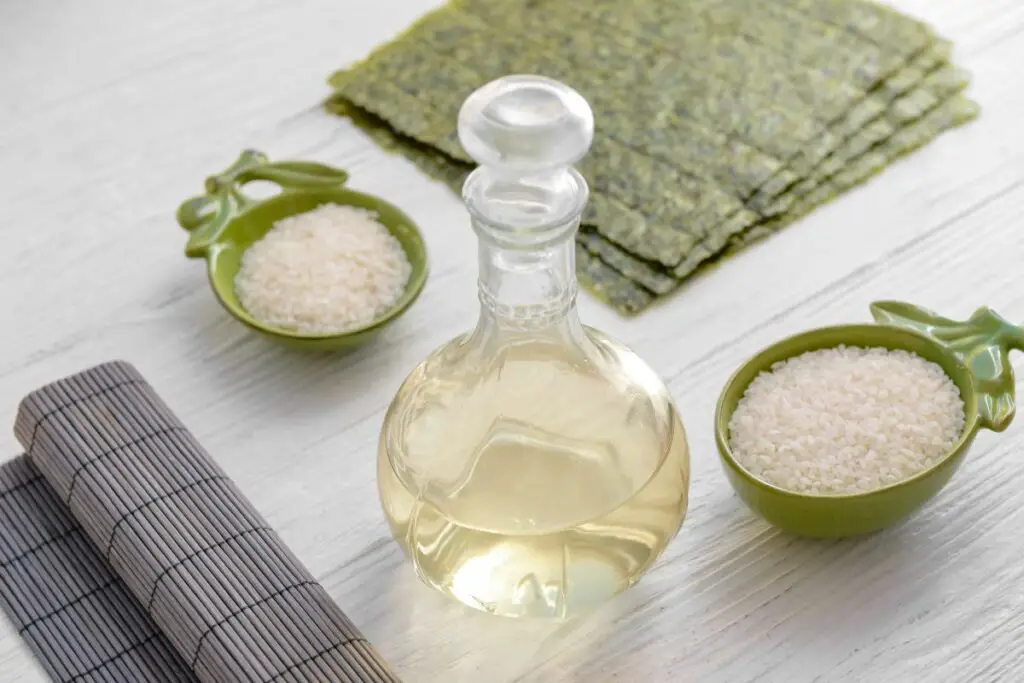
How much rice vinegar for sushi rice?
When seasoning sushi rice, it is important to use the correct amount of rice vinegar. Too much vinegar will make the rice too sour, while not enough will make it too bland. The ideal amount of rice vinegar for sushi rice is about 3 tablespoons (45 ml) per cup of uncooked rice.
How to make sushi rice without rice vinegar?
In order to make sushi rice without rice vinegar, you will need to use another type of acid. You can use lemon juice, lime juice, or apple cider vinegar. Simply replace the rice vinegar with one of these acids, and your sushi rice will turn out ok.
What is the best sushi rice temperature?
The best sushi rice temperature for molding is between 86°F to 104°F (30°C – 40°C). This temperature range allows the rice to maintain its sticky consistency, which is essential for making sushi. The rice should also be slightly warm to the touch so that it can be easily molded into the desired shape.
Do I have to use sugar in sushi rice?
No, you don’t have to use sugar in sushi rice, but it does help to balance out the flavors. If you prefer not to use white sugar, you can use honey, coconut sugar, or cane sugar to sweeten your sushi rice.
Read Also: How To Keep Sushi Fresh Overnight? (Storage Tips For Extended Shelf Life).
In Summary
To make perfect sushi rolls, it is important to know how to season sushi rice. The sushi rice should be cooked properly and seasoned with the right amount of vinegar, sugar, and salt. With these tips and some trial and error, you will be sure to make delicious sushi rolls that your friends and family will love.






